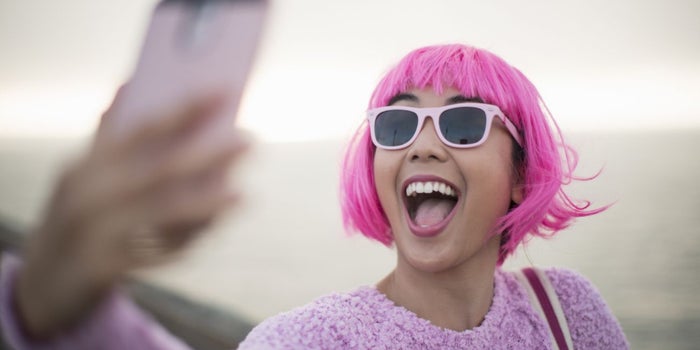Blog
Everything is Media
As we spend more and more time on our phones, the lockdown has led to an estimated 25% MOM increase in the time spent on Instagram and Tik Tok.
It is estimated that over 1.5k pieces of content compete for your attention daily, and we are becoming increasingly bombarded by targeted advertising as brands infiltrate every part of our mobile experience. Nowhere is this more prevalent than on social channels. I should know as I run an agency that supports some of the world’s biggest brands and entertainment clients to advertise on social platforms and mobile devices.
Our social space is no longer private – the idea of social networks as a means to connect and communicate with friends, colleagues, and loved ones has been invaded by big brands looking to steal our attention away.
Everything is an Ad
With the spread of the global pandemic in recent months and government-enforced lockdowns across Europe, we have seen brands turning to user content for their advertising. With a shift away from glossy, over-produced “films”, we’re seeing stories from real people often shot on their mobile phone in their living room, bedrooms, and kitchens. This shift, along with the rise in video conferencing and our window into the living rooms of colleagues, politicians, athletes, musicians, TV and film stars, has meant a blurring of the lines when it comes to the type of content we expect to be an advert.
This low-fi production shows the truth in Scott Galloway’s claim that “80% of the production value gets you 90% of the value”, in as much as we are happy to consume content shot on a phone in someone’s home if it entertains or inspires us in some way. This has correlated with a huge rise in engagement across influencer promoted ad content, which has seen a 70% bump during lockdown.
We are willing to live with a decrease in production quality for a variety and breadth of content (just look at Netlfix) which has been great news for Tik Tok, which has seen a surge in downloads and usage. The week lockdown was announced, UK downloads of the app rose 34% as more and more Brits see Tik Tok as a pressure valve for being cooped up indoors. According to Kenneth Goldsmith, author of Wasting Time on the Internet, “the only response to an existential situation is absurdity and humour,” adding that “it brings us back to the darker side of surrealism.”

Everyone is an advertiser
We may be seeing the first signs of the long-tail of the influencer market where everyone becomes an advertiser. As more and more of us become accustomed to low-quality ad content and engaging directly with both macro and micro-influencers, we are moving from an attention age to an influence age. Brands are no longer satisfied with their messages consuming large parts of our day, they want them to mean something to drive ROI.
This is happening most obviously on Instagram, becoming as much an e-commerce platform as the social one it started out as. It is estimated “80% of people decide whether to buy a product based on Instagram content” and with more and more of us using Instagram as the place we search, research, and buy from, it has huge sway in the buying habits of millions of Gen-Zs and Millennials. “77% of people search for brands using Instagram” and much of that content will be influencer and consumer-created. We, the audience, are becoming tastemakers helping shape the decisions of not just those around us, but also strangers from across the world.
All of this is good news for brands, being able to create cheaper advertising, and using the power of their audience to help shape the conversation and influence the purchasing decision of strangers. What this means for traditional advertising is as yet unclear and we may yet return to a new sense of normal, and a sense that the value in advertising stems from production quality, and cost. But I wouldn’t bet on it. I’m off to scroll Tik Tok… see you there!
Tom Jarvis – Founder & CEO Wilderness Agency
